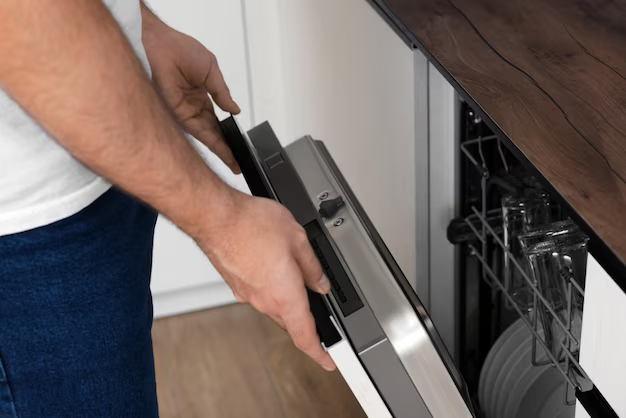Ensuring Clean Water: Steps to Flush Your Refrigerator Water Line After a Boil Water Advisory
When a boil water advisory is issued, it often leads to understandable concerns about the safety and quality of the water coming from your home’s appliances, especially your refrigerator's water line. Thankfully, ensuring your water is safe to consume afterwards doesn’t have to be an arduous process. This guide will walk you through everything you need to know about flushing and cleaning your refrigerator water line post-advisory.
Why Is Flushing Necessary After a Boil Water Advisory?
A boil water advisory is typically issued when there's a reasonable concern that the water supply may be contaminated with pathogens. This could be due to broken pipes, maintenance work on the line, or natural disasters like flooding. Since contaminants could potentially remain in refrigerator water lines even after the advisory is lifted, flushing those lines is crucial.
Key reasons to flush:
- Safety first: Ensures that any lingering bacteria or contaminants are cleared from your water supply system.
- Taste and odor: Flushing can remove any unpleasant tastes or smells that might have developed during the advisory period.
- Appliance longevity: Proper maintenance, including flushing, can help prolong the life of your refrigerator’s water dispensing system.
How to Flush Your Refrigerator Water Lines
Cleaning and flushing your refrigerator’s water line post-boil water advisory involves several steps to ensure safety and cleanliness. Here’s a comprehensive guide on how to do it effectively:
Step-by-Step Flushing Procedure
1. Disconnect the Water Supply
Before anything, stop water supply to your refrigerator. You’ll need to locate and turn off the valve, which is usually located under the sink or near the refrigerator itself.
2. Remove and Replace the Water Filter
- Importance of Replacement: The filter can harbor contaminants absorbed during the advisory, so replacing it is crucial.
- Proper Disposal and Installation: Carefully remove the old filter, dispose of it according to manufacturer guidelines, and install a new one. Follow the model-specific instructions to ensure correct installation.
3. Flush the Water Dispenser System
- Prepare a Container: Place a large container under the water dispenser or the spout.
- Dispense Water: Allow the water to flow until the entire system is flushed. Generally, dispensing 2-3 gallons of water ensures thorough cleaning.
4. Clean the Ice Maker
- Discard Existing Ice: Empty and discard the ice made during the advisory.
- Cycle the Ice Maker: Run at least two ice-making cycles and discard the ice produced to ensure old water from the lines is completely flushed out.
Additional Considerations
Dealing with Water Softener Systems
If your home is equipped with a water softener, it may need to be flushed as well. Most systems can be manually regenerated using settings specified in the manufacturer’s manual. This regeneration ensures the water softening media is also cleansed of any contaminants absorbed during the advisory.
Inspect and Clean Refrigerator Components
- Examine Connections: Check all hoses and connections for signs of contamination or damage. Tighten and secure any loose fittings.
- Clean External Surfaces: Wipe down the refrigerator and dispenser area with an antibacterial cleaner to ensure all external parts are sanitary.
Maintaining Water Quality Post-Cleansing
Once you’ve flushed the water lines, maintaining clean water should become part of your regular appliance upkeep routine. Here are a few tips:
- Regular Filter Changes: Replace your refrigerator’s water filter every six months, or as recommended by the manufacturer.
- Routine Flushing: Periodically flush the water line. This is particularly important if the water has a noticeable taste or odor.
- Scheduled Maintenance Checks: Ensure other components of your water delivery systems, including the ice maker, are routinely inspected and maintained.
Quick Tips for Consistent Refrigerator Maintenance
🛠️ Regular Upkeep:
- Replace filters every six months.
- Conduct routine checks for leaks or blockages.
🚰 Monitor Water Quality:
- Be attentive to changes in taste or smell.
- Follow manufacturer guidance for sustaining optimal performance.
🧊 Ice Maker Care:
- Promptly dispose of unused ice.
- Regularly sanitize ice storage bin.
Dealing with Special Situations
What if You Missed the Advisory?
If you unknowingly used contaminated water, it’s important to be attentive to symptoms of any waterborne illness, like gastrointestinal discomfort. Furthermore, ensure immediate flushing and cleansing of all household water lines and appliances, and consult with your local water authority for further guidelines.
When Professional Help is Needed
In certain cases, enlisting professional appliance or plumbing services might be advisable, particularly if:
- You're unable to identify or properly rectify any water line problems.
- There are persistent issues with water quality despite taking the advised steps.
Understanding and Responding to Water Advisories
It’s not uncommon to feel concerned or confused when a boil water advisory is issued. Understanding these advisories—why they’re issued, and what they entail—can better prepare you for a swift response.
What Triggers an Advisory?
Advisories often result when significant vulnerabilities in the water supply system are exposed, such as:
- Infrastructure Failures: Pipe bursts or maintenance repairs.
- Natural Events: Flooding, hurricanes, or earthquakes affecting water systems.
How to Stay Informed
Stay in-the-know by subscribing to local alerts or checking city notices. This ensures timely updates and guidance during any water safety concerns.
Flushing your refrigerator water line after a boil water advisory is an essential step to regain clean, safe-to-drink water. By following these careful steps and maintaining awareness around your home’s water quality, you not only ensure health and freshness but also extend the life of your appliance. Being informed and proactive is the best approach to tackle water advisories with confidence and expertise.
